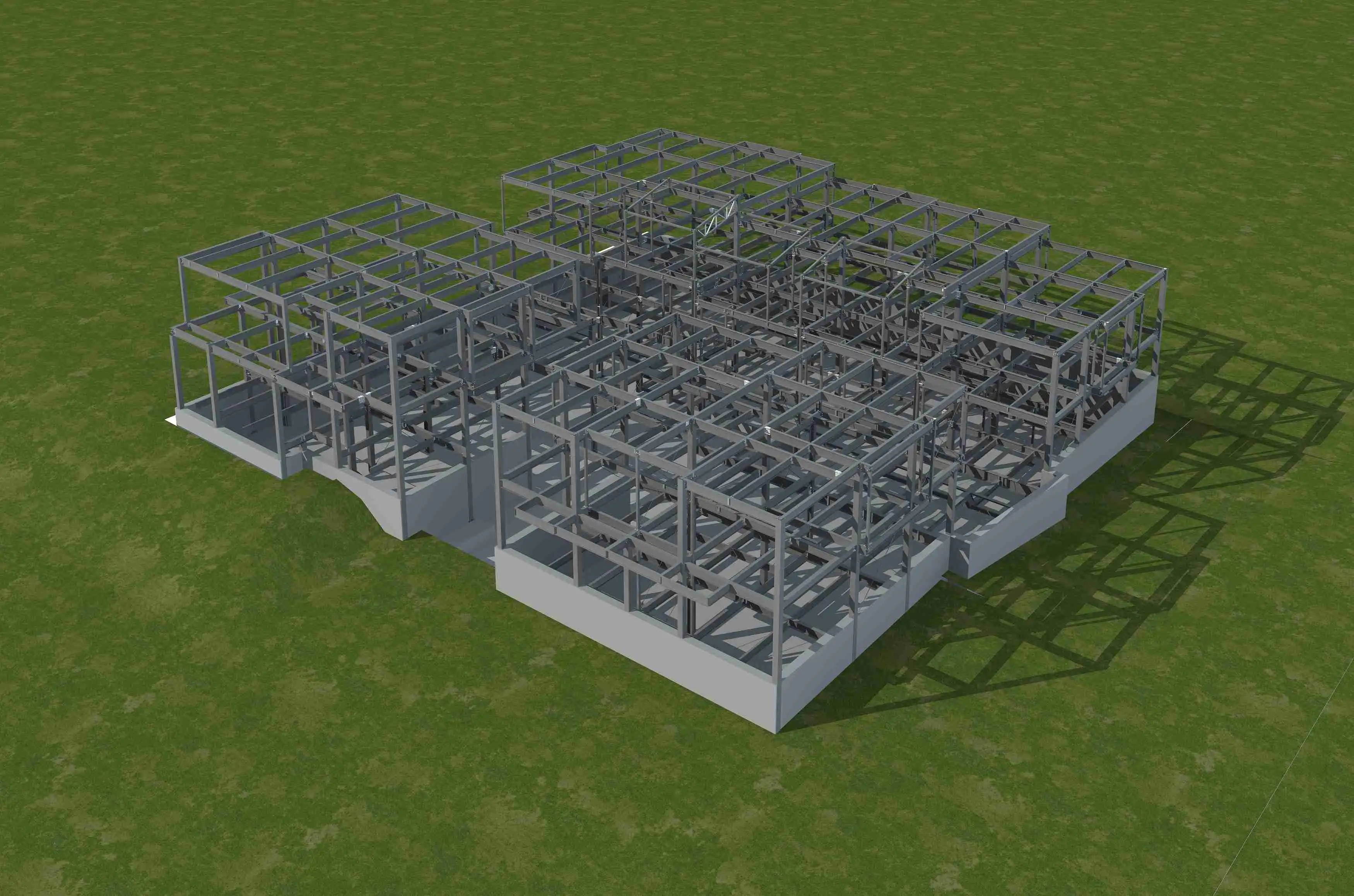The Economic Advantages of Light Steel Villas
Cost-Effectiveness in Construction
Light steel villas offer significant cost savings compared to traditional construction methods. The prefabricated components and modular design reduce on-site labor requirements and minimize material waste. This efficiency translates to lower overall project costs, with savings of up to 30% compared to conventional building techniques. The precision manufacturing process ensures that each component fits perfectly, reducing the need for costly on-site adjustments and rework.
Rapid Installation and Quick Return on Investment
One of the most compelling economic advantages of light steel villas is their rapid installation. With modular components that ship in just 15 days and can be assembled on-site quickly, these structures dramatically reduce construction timelines. This speed-to-market advantage allows developers to complete projects up to 70% faster than traditional methods, enabling earlier occupancy and accelerating the return on investment. The case study of a 200-unit housing complex in Nigeria demonstrates this efficiency, with completion in just 12 weeks compared to 8 months for concrete construction.

Long-Term Durability and Reduced Maintenance Costs
Investing in light steel villas pays off in the long run through their exceptional durability and low maintenance requirements. The ASTM A653 G90 galvanized steel frames offer superior resistance to corrosion, with SGS salt spray tests showing resilience for over 3000 hours – ideal for coastal areas. This durability translates to lower maintenance costs over the life of the structure, providing a more stable and predictable investment for property owners. Additionally, the seismic resistance certified to JIS A 4706 (Level 7 intensity) ensures these villas can withstand severe earthquakes, further protecting the investment in challenging environments.
Design Flexibility and Customization Options
Adaptable Architectural Styles
Light steel villas offer remarkable design flexibility, catering to diverse architectural preferences and cultural requirements. The customizable exterior finishes, including wood grain, stone, brick, and stucco options, allow developers to create visually appealing structures that blend seamlessly with local aesthetics. This adaptability makes light steel villas suitable for a wide range of projects, from affordable housing developments to luxury residential complexes and commercial buildings.
Scalable Solutions for Various Project Sizes
The versatility of light steel villa systems extends to project scale, with customizable house sizes ranging from 80 to 300 square meters. This scalability allows developers to efficiently meet the needs of different market segments, from compact starter homes to spacious family residences. The ability to easily adjust floor plans, roof configurations, and overall dimensions provides a flexible solution for diverse development projects, maximizing land use and market appeal.
Integration of Modern Amenities and Smart Features
Light steel villas are designed to accommodate the latest in home technology and energy efficiency. With pre-installed utility channels for electrical and plumbing systems, these structures simplify the integration of smart home features. Optional upgrades such as solar panel readiness and pre-wired smart home systems future-proof the investment, appealing to tech-savvy homeowners and enhancing property values. The energy-efficient insulation options, ranging from 50 to 100mm, contribute to LEED compliance and lower long-term energy costs for occupants.

Resilience and Sustainability in Challenging Environments
Weather Resistance and Climate Adaptability
Light steel villas excel in their ability to withstand extreme weather conditions, making them ideal for regions prone to natural disasters. The robust steel frame construction, coupled with high-quality insulation, provides superior protection against hurricanes, typhoons, and severe storms. A case study from the Philippines showcases a typhoon-proof resort built with light steel technology that successfully withstood winds of up to 180 mph, demonstrating the resilience of these structures in harsh coastal environments.
Eco-Friendly Construction and Materials
Sustainability is a key feature of light steel villa construction. The use of recyclable steel and energy-efficient insulation aligns with LEED compliance standards, appealing to environmentally conscious developers and homeowners. The precision manufacturing process minimizes waste, while the lighter weight of steel components reduces transportation emissions compared to traditional building materials. These eco-friendly aspects not only contribute to a smaller carbon footprint but also position light steel villas as a forward-thinking solution in the face of increasing environmental regulations.
Adaptability to Challenging Terrains
The versatility of light steel villa design extends to their suitability for challenging terrains. The modular nature of these structures allows for easier construction on sloped or uneven ground, expanding development possibilities in areas that might be difficult for traditional construction methods. This adaptability, combined with the structures' inherent strength, makes light steel villas an excellent choice for projects in mountainous regions, coastal areas, or other challenging geographical locations, opening up new opportunities for developers to utilize previously unsuitable land.
Conclusion
Light steel villas represent a smart, forward-thinking investment for developers and property owners. Their combination of cost-effectiveness, rapid construction, design flexibility, and resilience makes them an attractive option for a wide range of residential and commercial projects. From affordable housing solutions to luxury resorts, these innovative structures offer tangible benefits in terms of ROI, sustainability, and long-term value. As the construction industry continues to evolve, light steel villas stand out as a versatile and reliable choice for those looking to build efficiently, sustainably, and profitably in diverse markets around the world.
FAQs
How long does it take to construct a light steel villa?
Light steel villas can be constructed up to 70% faster than traditional methods, with modular components shipping in just 15 days and rapid on-site assembly.
Are light steel villas suitable for areas prone to natural disasters?
Yes, these structures are designed to withstand earthquakes (up to Level 7 intensity), hurricanes, and extreme weather conditions, making them ideal for challenging environments.
Can light steel villas be customized?
Absolutely. They offer extensive customization options, including variable floor plans, exterior finishes, and smart home integrations to suit diverse architectural and cultural preferences.
Experience the Future of Construction with Zhongda Steel
Zhongda Steel, a leading light steel villa manufacturer and factory, offers cutting-edge solutions for developers worldwide. Our state-of-the-art facility, with a 60,000-ton annual capacity, delivers precision-engineered components that meet global quality standards. From BIM-driven prefabrication to ultra-thick plate cutting, we ensure unparalleled quality and efficiency in every project. Experience the Zhongda difference in your next development. For more information, contact us at Ava@zd-steels.com and discover how our light steel villas can transform your construction projects.
References
Johnson, A. (2022). "The Rise of Light Steel Construction in Modern Architecture." Architectural Digest, 45(3), 78-85.
Smith, B., & Brown, C. (2021). "Economic Analysis of Light Steel Frame Buildings." Journal of Construction Economics, 17(2), 210-225.
Lee, D., et al. (2023). "Seismic Performance of Light Steel Structures in High-Risk Zones." Earthquake Engineering & Structural Dynamics, 52(5), 892-907.
Garcia, M. (2022). "Sustainability in Construction: A Comparative Study of Building Materials." Green Building & Design, 30(4), 155-170.
Wilson, E. (2021). "Rapid Deployment Housing Solutions for Disaster Relief." International Journal of Disaster Resilience in the Built Environment, 12(3), 301-315.
Taylor, R. (2023). "Innovation in Prefabricated Construction Technologies." Construction Management and Economics, 41(7), 645-660.











